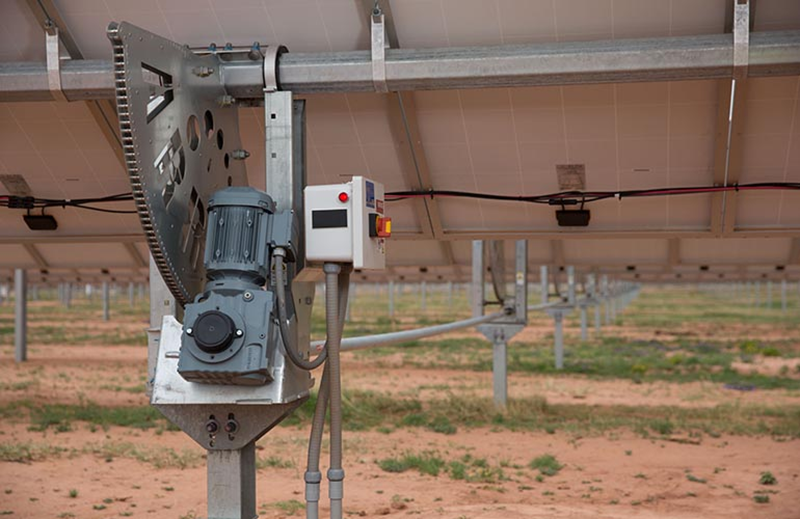Solar trackers let your solar panels follow the sun’s path in the sky, just like sunflowers, so they can generate more solar energy.

Next, we will explain everything you need to know about solar trackers, from what types they are to whether they are worth the investment.
What is a solar tracker?
Solar tracker is a device that follows the sun in the sky. When the solar tracker is combined with the solar panel, the panel can follow the path of the sun and generate more renewable energy for your use.
Solar trackers are usually compatible with ground mounted solar systems, but recently roof mounted trackers have also appeared on the market.
Normally, the solar tracking device will be connected to the bracket of the solar panel. From there, the solar panels will be able to move with the sun.
The way the solar tracking system moves depends on its system type. There are three types of sun tracking systems.
1. Manual solar tracker
The manual tracker requires someone to physically adjust the battery panel at different times of the day to follow the changes of the sun. This is not always practical because you need someone to constantly monitor the sun and change the position of the solar panel system.
2. Passive solar tracker
The passive tracker contains a low boiling liquid that will evaporate when exposed to solar radiation. When the liquid evaporates, the tilt system becomes unbalanced. This imbalance causes the panel to tilt in the direction of the sun’s rays.
3. Active solar tracker
The active tracker relies on a motor or hydraulic cylinder to change position. The motor in the active tracker will move the photovoltaic panel to face the sun. Although this is more convenient than the manual tracker, the moving parts in the motor are easily damaged. This may lead to higher maintenance costs in the life cycle of the system.

From here, solar trackers can be further classified according to their moving direction:
Single axis solar tracker
The single axis tracker follows the position of the sun from east to west. These are typically used for utility scale projects. Single axis trackers can increase production by 25% to 35%.
Double axis solar tracker
This tracker tracks the sun not only as it moves from east to west, but also as it moves from north to south. Dual axis trackers are common in residential and small commercial solar projects with limited space, so they can produce enough electricity to meet energy needs.
What are the advantages and disadvantages of using solar trackers?
Like other things, solar trackers have both advantages and disadvantages.
Advantages of Solar Tracker
Compared with fixed solar arrays, tracking systems provide a greater level of energy output because they can follow the sun’s movement.
Solar trackers are very useful in areas where time of use tariffs are used. More energy will be produced during peak hours, which means you don’t have to pay when grid energy is most expensive.
Disadvantages of solar tracker
Solar trackers are very expensive and can easily double the project cost.
Solar trackers are made of moving parts, which means they are more likely to be damaged. This leads to higher maintenance costs.
The decision to install the tracker may require additional site planning and preparation, including digging additional wiring ditches and additional site leveling.
If you want to know more about solar tracker, please contact CDS SOLAR






